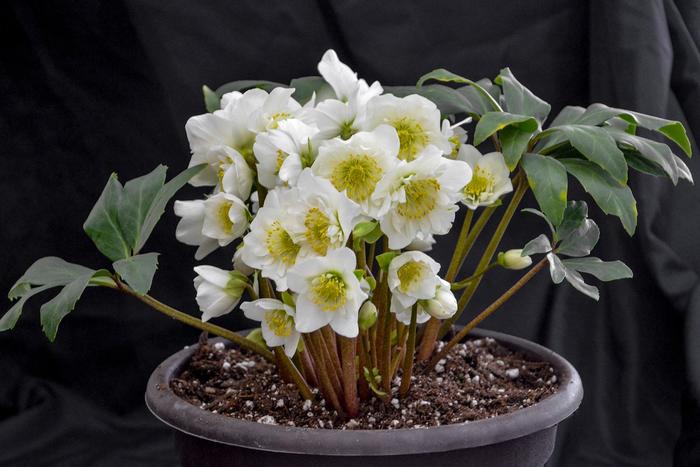« Previous Plant | Next Plant »
Helleborus niger
'Snowbells' Christmas Rose
Semi-double, pure white flowers measure 2½-3 across, with five petals and additional petaloids at the center. These flowers are naturally side-facing versus downward-facing, so you can enjoy the bright white flowers with little effort. Hellebores are the harbingers of spring, blooming for six weeks or more beginning in late winter. This is the perfect plant for naturalizing in moist, woodland areas where its extensive root system will spread as far as it is allowed.
- » Semi-double, 2-3" pure white flowers
- » Blooms for six weeks or more beginning in late winter
- » Will grow under black walnut trees
- » Ideal for the shady woodland garden
Hellebores are enjoyable to grow because they are low-maintenance and disease pest-free. Simply trim back last year's foliage in the spring. They can adapt to almost any growing conditions. Though they prefer rich, moist, organic soil, they will also grow in sandy or clay soil. They can even tolerate short periods of drought. The soil pH can range anywhere from slightly acidic to slightly alkaline. Hellebores are shade plants that need to be protected from the hot afternoon sun. They will grow in full shade under large deciduous trees as long as they receive full sun from winter to spring before the trees get their leaves. To increase the number of hellebores in your garden, mulch them heavily in the fall. The new seedlings will grow in this mulch come spring and can then be transplanted elsewhere in the garden. WARNING: Hellebores are poisonous. Do not consume any part of the plant!
- Height
- 10 - 12 in
- Spread
- 12 - 14 in
- Zone
- 4-9
- Color
- White
- Categories
- Perennial
- Breeder
- Proven Winners
- Tags
- Attracts Pollinators; Border or Bed; Container; Cut Flower/Foliage; Great Foliage; Mass Planting
Check back soon for additional information on 'Snowbells' Christmas Rose.
Hellebores are enjoyable to grow because they are low-maintenance and disease pest-free. Simply trim back last year's foliage in the spring. They can adapt to almost any growing conditions. Though they prefer rich, moist, organic soil, they will also grow in sandy or clay soil. They can even tolerate short periods of drought. The soil pH can range anywhere from slightly acidic to slightly alkaline. Hellebores are shade plants that need to be protected from the hot afternoon sun. They will grow in full shade under large deciduous trees as long as they receive full sun from winter to spring before the trees get their leaves. To increase the number of hellebores in your garden, mulch them heavily in the fall. The new seedlings will grow in this mulch come spring and can then be transplanted elsewhere in the garden. WARNING: Hellebores are poisonous. Do not consume any part of the plant!
